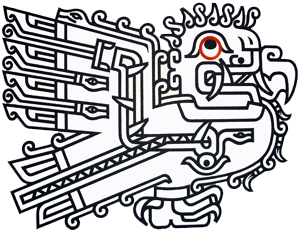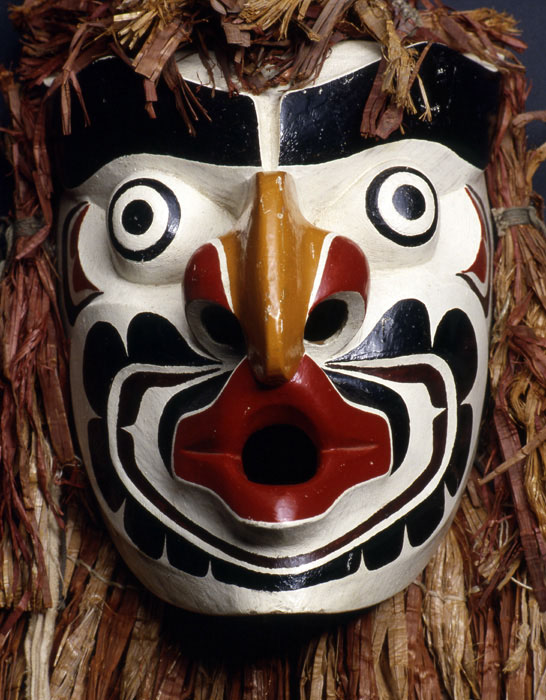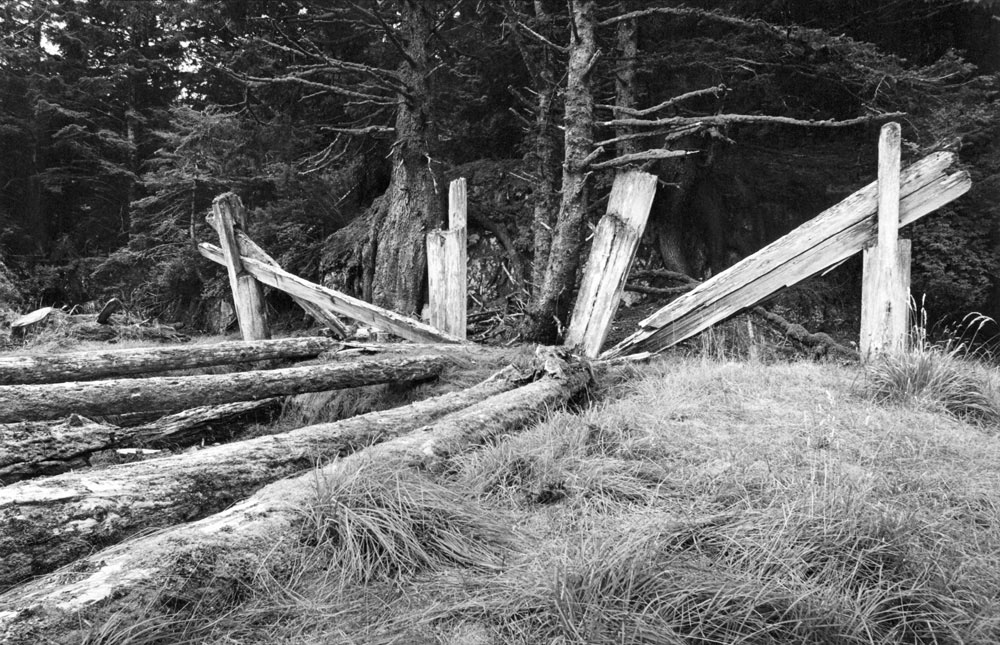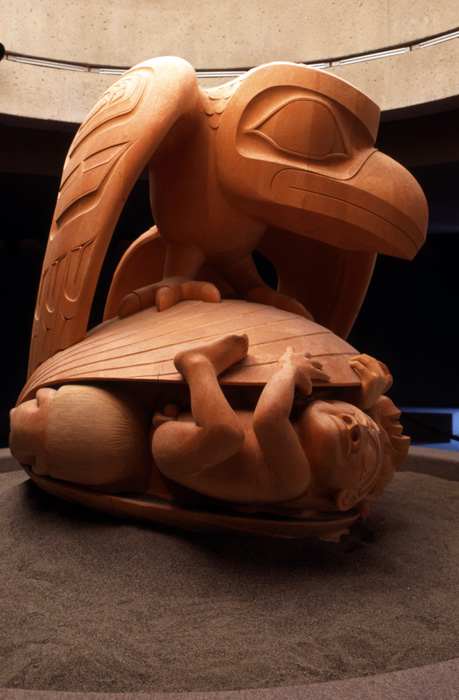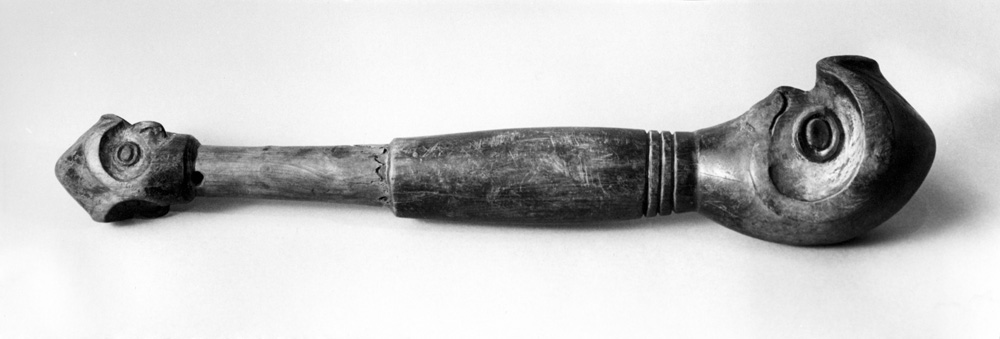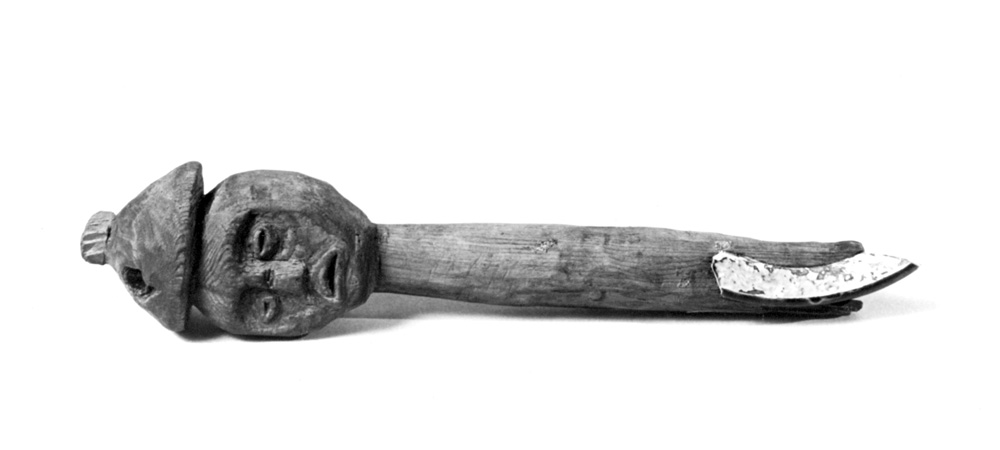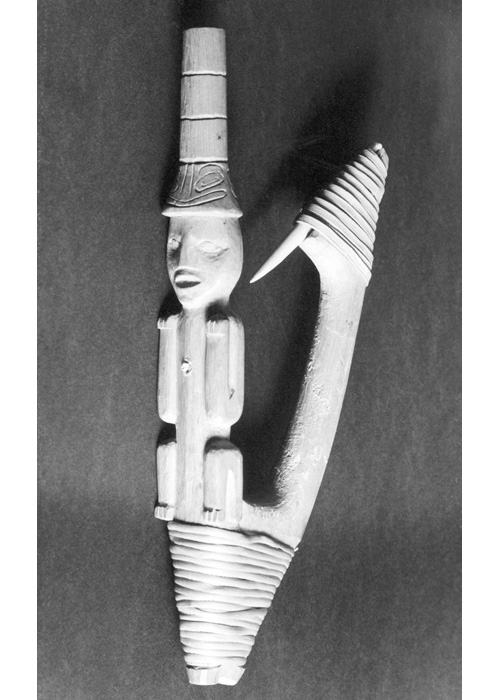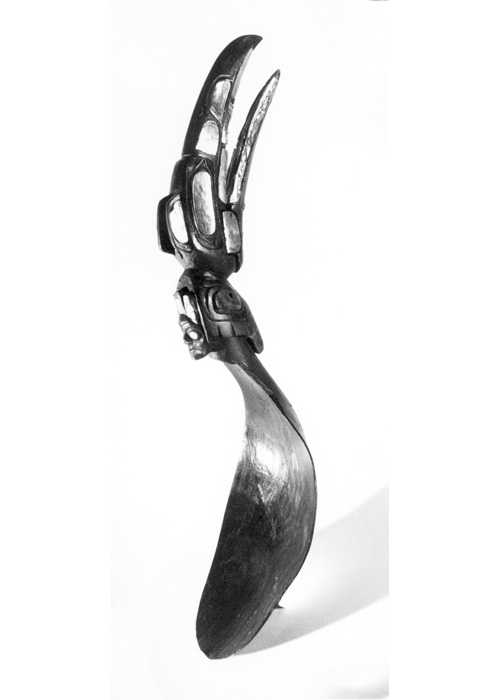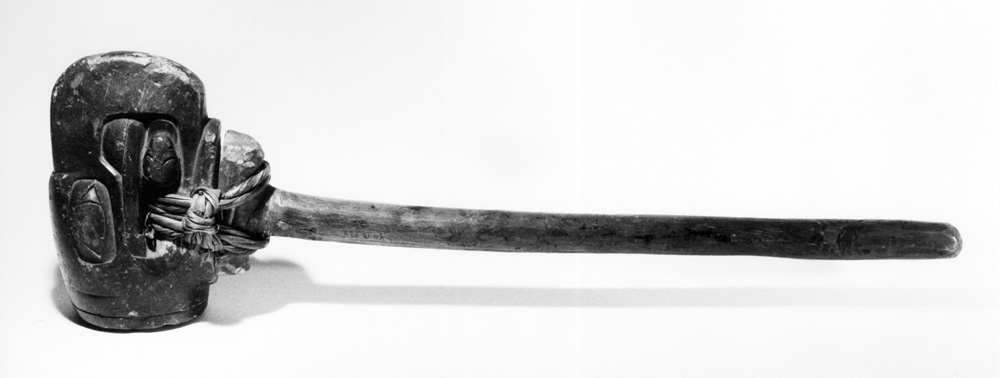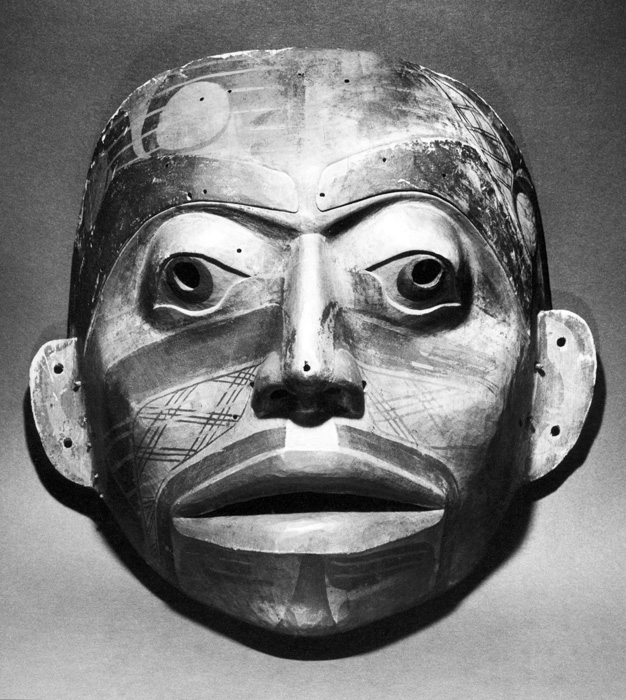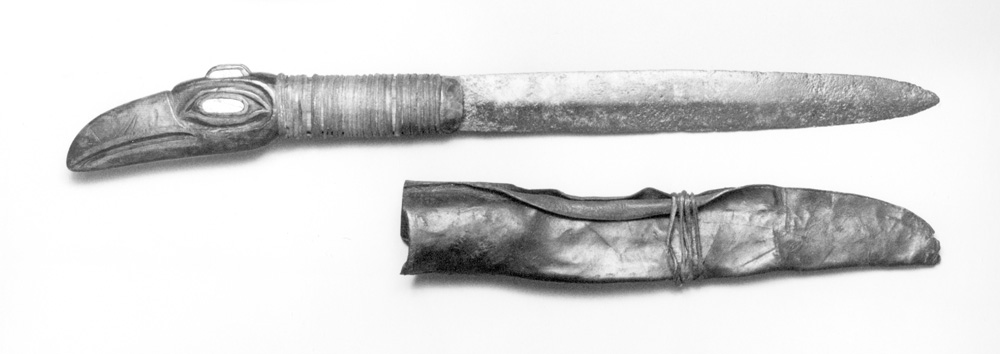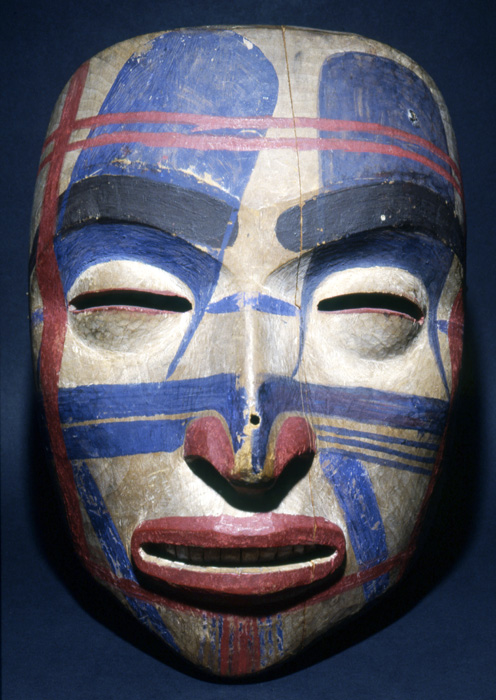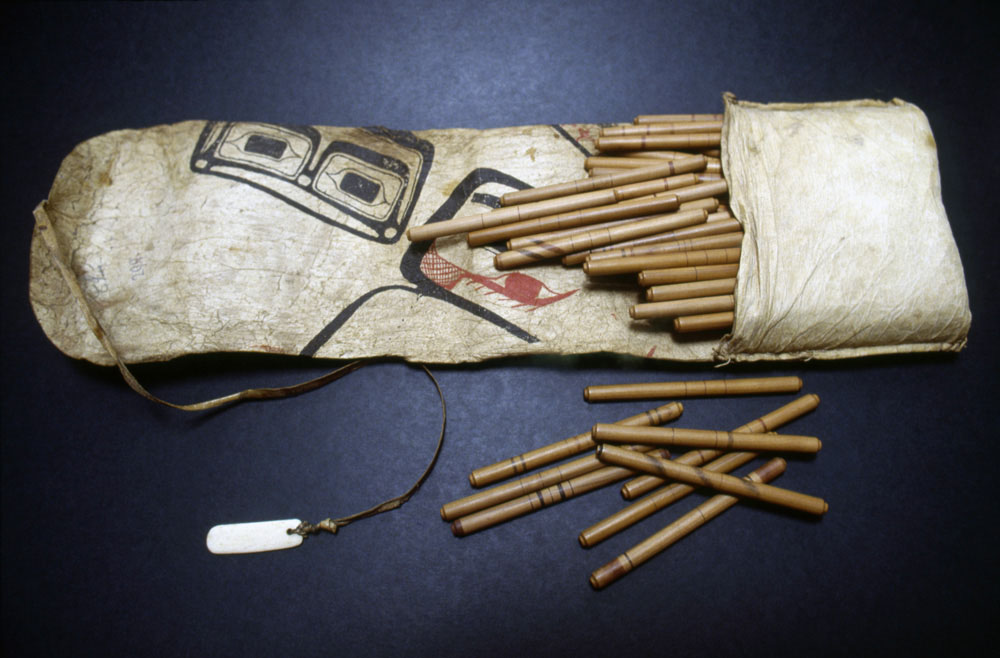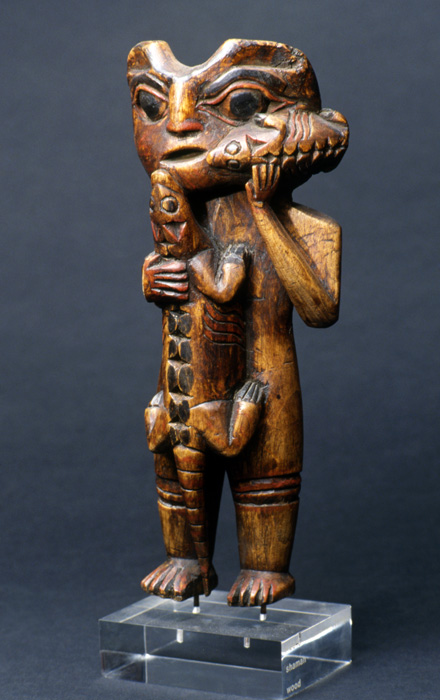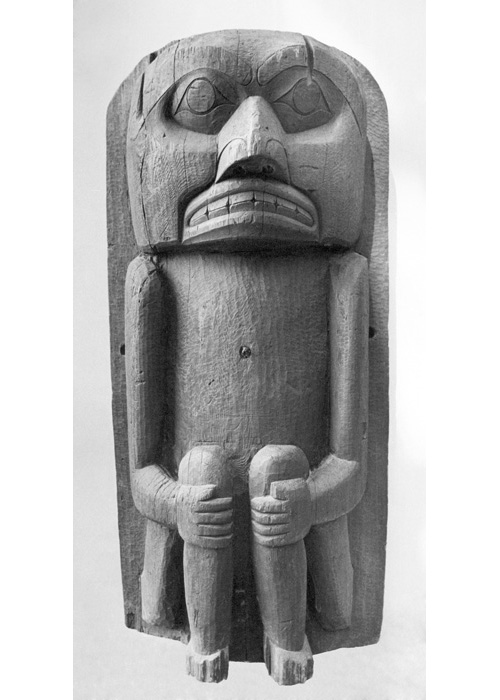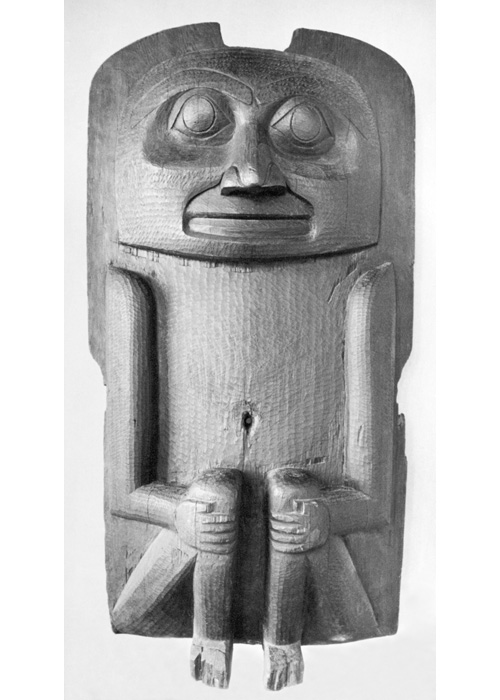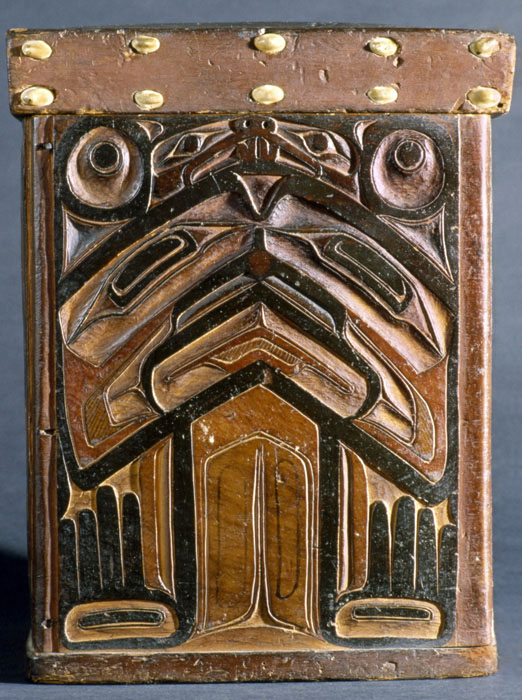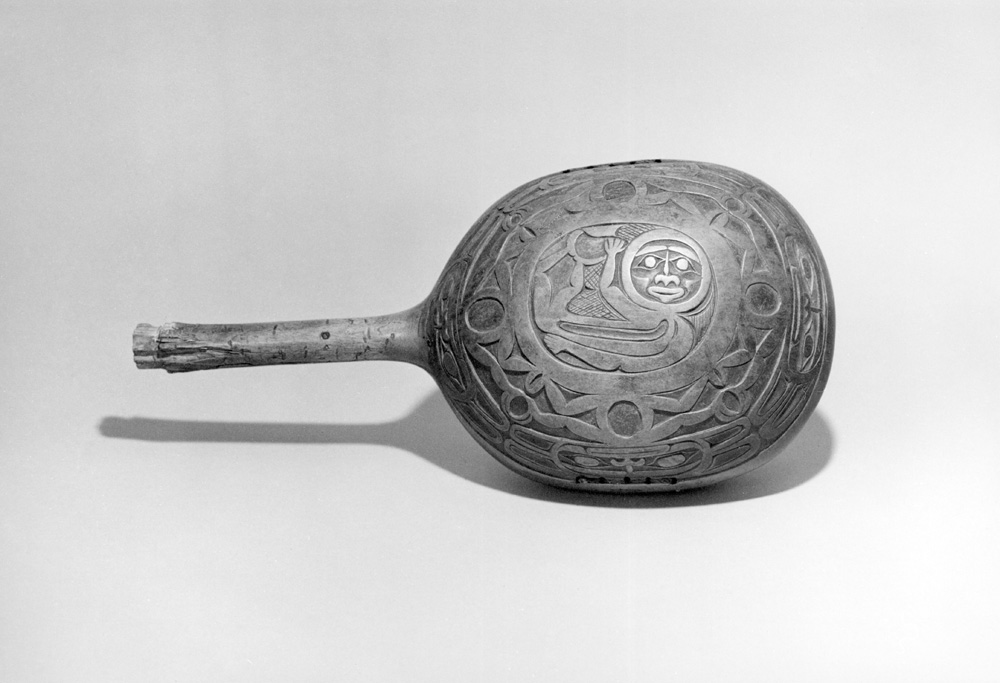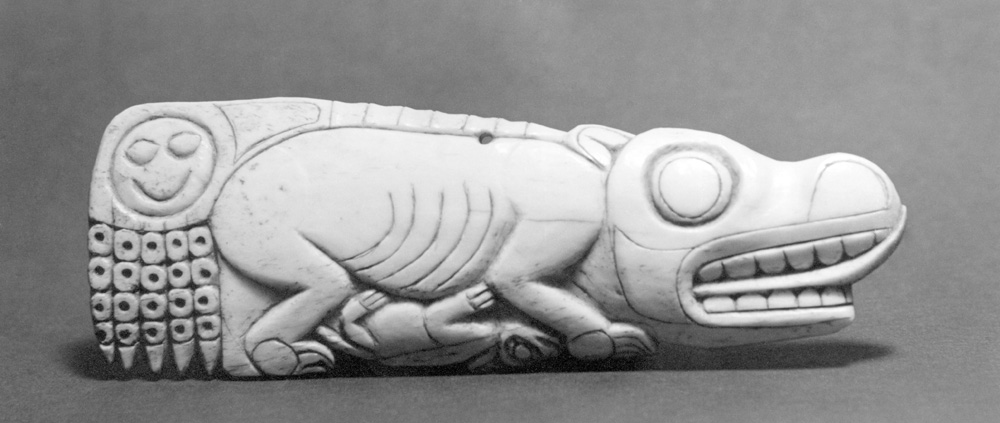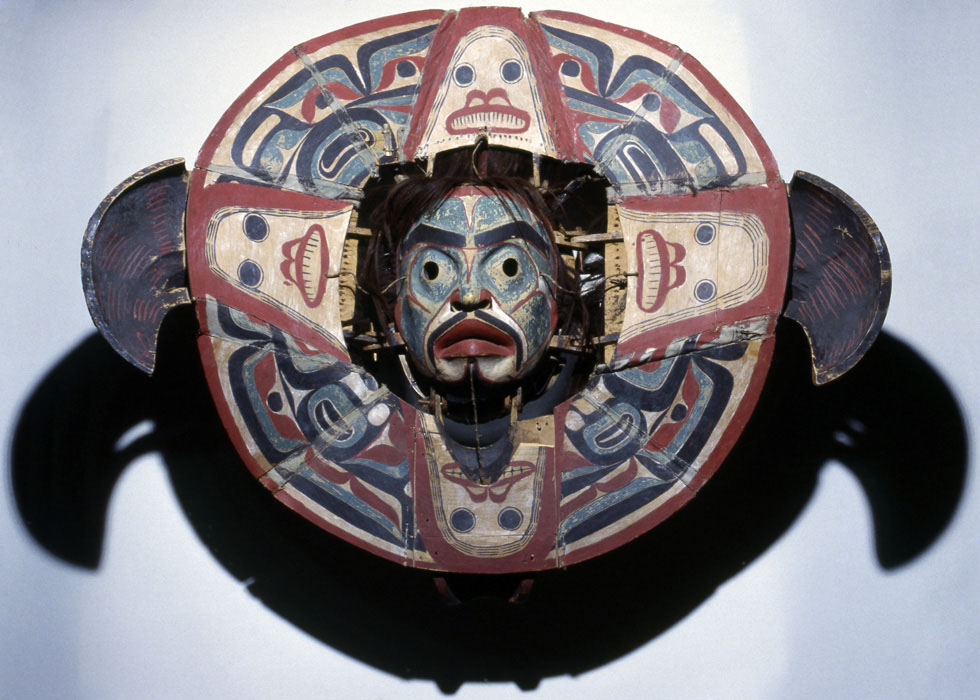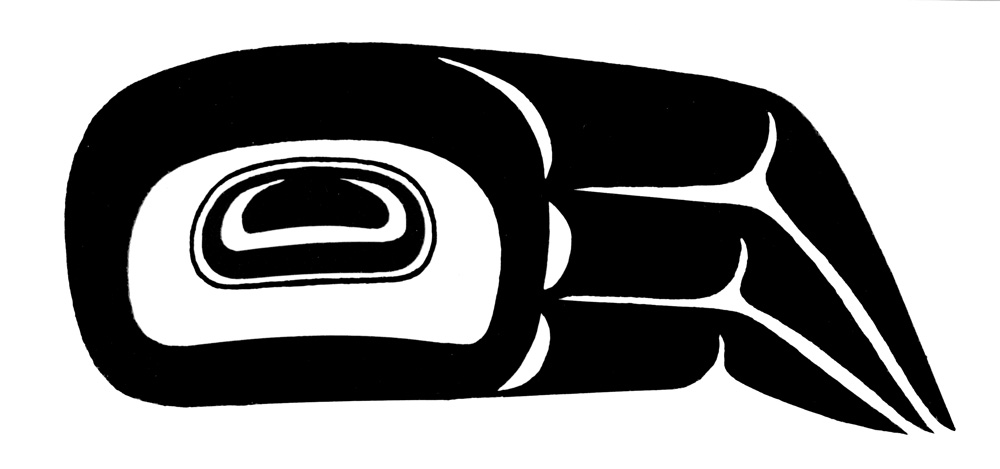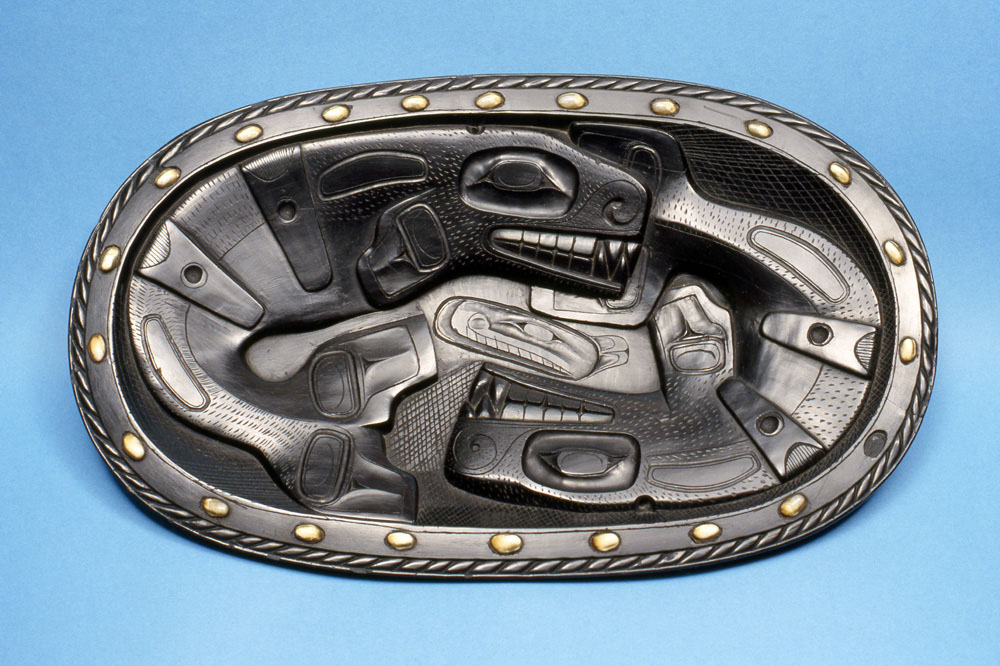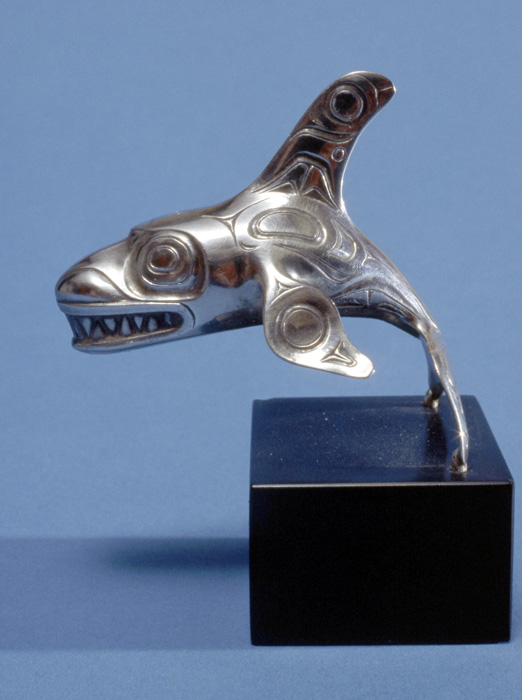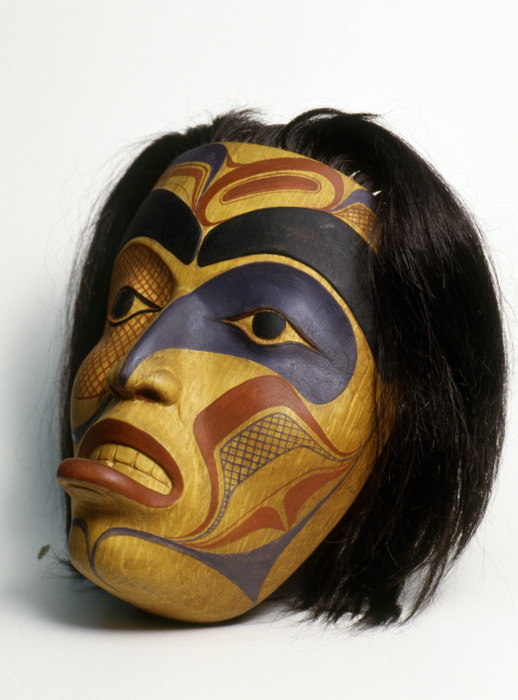En el pueblo gitksan de Kitwanga se conservan varios tótems de distintas épocas. Son recuerdos de la exhibición del prestigio social y el poder de los jefes tsimshian. La iconografía de los tótems se ha transmitido y se explica aquí para los cinco primeros de la izquierda. El tótem del puma tiene más de 140 años (¡1987!) y muestra alternativamente un lobo y un oso bajo el puma de la parte superior. En el siguiente tótem del lobo, de 1895, una osa se agacha en el centro con dos oseznos a sus pies. Se trata de la mítica mujer Xpisunt, que vivió entre osos durante algún tiempo y dio a luz a gemelos, mitad humanos, mitad osos; como la figura humana básica, sostiene a uno de sus hijos en brazos. En el siguiente poste, de 1942, uno de sus hijos osos está sujeto por encima de la madre osa Xpisunt; su segundo hijo originalmente estaba sentado en la parte superior del poste. El mito de Xpisunt continúa figurativamente en el siguiente poste totémico, que se llama poste del oso. Los hermanos de Xpisunt mataron a su marido oso y la llevaron a ella y a sus gemelos a casa. Los niños les ayudaron con las trampas y todos sus descendientes se convirtieron en exitosos cazadores de osos. En la parte superior del poste, que tiene más de 110 años, hay montada una figura de lobo; debajo, Xpisunt y sus gemelos, y después, en dos ocasiones, un lobo y un oso. En el quinto mástil, creado en 1919 y denominado «Sobre el que se eleva el cuervo», falta hoy el citado cuervo, y la figura de Axgawt está desprovista de todas sus insignias originales de jefe, como la placa de cobre.
